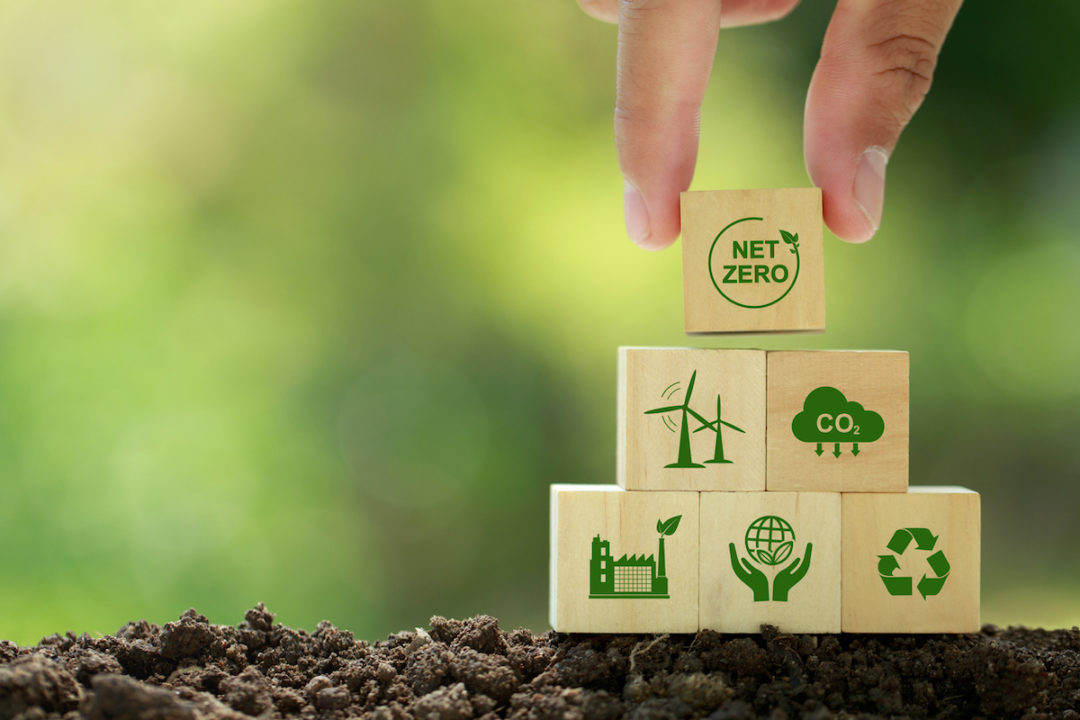
Many C-suite leaders are starting to investigate how to make their facilities and data centers greener. As the SEC considers requiring greenhouse gas (GHG) emissions disclosures, companies are taking a greater interest in analyzing their environmental risks. Although the process of upgrading or retrofitting facilities can seem daunting, many of these changes can quickly lead to energy and cost savings. Energy efficiency projects and other sustainable improvements are great ways to both boost the bottom line and impress stakeholders, including customers and investors. Below are the most important steps to consider and the challenges and opportunities associated with each.
Define Your Goals
Many companies are just getting started thinking about the sustainability of their operations. Although it sounds simple, it’s always helpful to clarify at the outset what the goal is: Is it primarily cost savings? Achieving the biggest emissions reduction per dollar spent? Comfort adjustments? Aligning with relevant teams on these goals at the outset can help leaders better understand what's needed to have the most meaningful impact and make sure the right organizational leaders are in the room — frequently including finance and operations teams. It’s also important to think about how any desired decarbonization initiatives fit within a broader organizational climate strategy if there’s one already in place. This will help calibrate ambitions levels, and provide clarity on sequencing projects.
Determine Projects and Scope
For big energy consumers like warehouses and data centers, there’s typically no shortage of levers to pull when it comes to saving energy and costs. Lighting systems, HVAC equipment, equipment that consumes high levels of energy are great places to start. As technology has evolved, upgrades are usually more efficient. But this growing abundance of opportunities can also present a challenge, as companies struggle to keep up with the latest solutions, and confront decision paralysis. A good rule of thumb is to start with projects that will lead to the quickest ROI — the “low hanging fruit” that will garner quick wins and constitute proof of success for the broader company.
Navigate Vendor Procurement Efficiently
While most companies have mature procurement functions for goods and services that are core to their business, not all have established processes for engaging vendors that offer efficiency or sustainability solutions. Even if you have a good idea of what projects you want to start with, it can be a headache to solicit bids, compare options, and vet for quality. Moreover, these tasks have historically been the responsibility of professionals with many other tasks on their plate — whether facility managers, environment, health and safety (EHS) professionals, or other operations staff. It’s important to shop around efficiently, or seek providers that can bundle solutions and offer discounts for you.
Structure Financing and Capture Incentives
As in most industries, cost is typically the primary consideration when thinking about facility upgrades for warehouses and data centers. The business case has to be there. It’s true that many carbon-reduction actions save companies money, but the initial investment must make sense as well. Fortunately, some financing solutions allow companies to upgrade their facilities with no capital expenditure. One model is the energy performance contract, which funds the upfront investment in facility or equipment upgrades from a portion of the resulting savings, allowing companies to see savings on their energy bills right away. Moreover, as the landscape of government and utility incentives continues to expand, it’s also important to investigate what your company could qualify for in terms of tax credits or deductions.
Protect Mission-Critical infrastructure
No company wants downtime in their operations, but this is especially true for most companies with warehouses and data center operations. With mission-critical functions, these operations can’t afford to sit idle. It’s crucial to ensure investments in decarbonization allow for mostly regular business functioning, and to understand during project scoping what the operational impact will be. One tactic is to bundle certain projects together to reduce downtime to the absolute minimum.
Track and Share Progress
As you implement efficiency and other sustainability projects, it’s important to track their impact and share your progress with stakeholders. Understanding the impact of your efforts will help calibrate the work still to be done. Relatedly, strong data is key for under-girding companies’ reporting, PR, and other forms of evangelization of their sustainability efforts. Fortunately, tracking progress is becoming ever easier with carbon management and sustainability platforms, which also enable you to satisfy carbon disclosure requests with the same data.
Climate and sustainability goals can be difficult to quantify, but facility leaders have an opportunity to reduce costs and improve their operations through efficiency and other upgrades and retrofits. Planning for these projects now can help the bottom line, impress stakeholders, and set the business up for long-term success.
Jay Ruckelshaus, PhD, is head of climate strategy at Gravity Climate.







